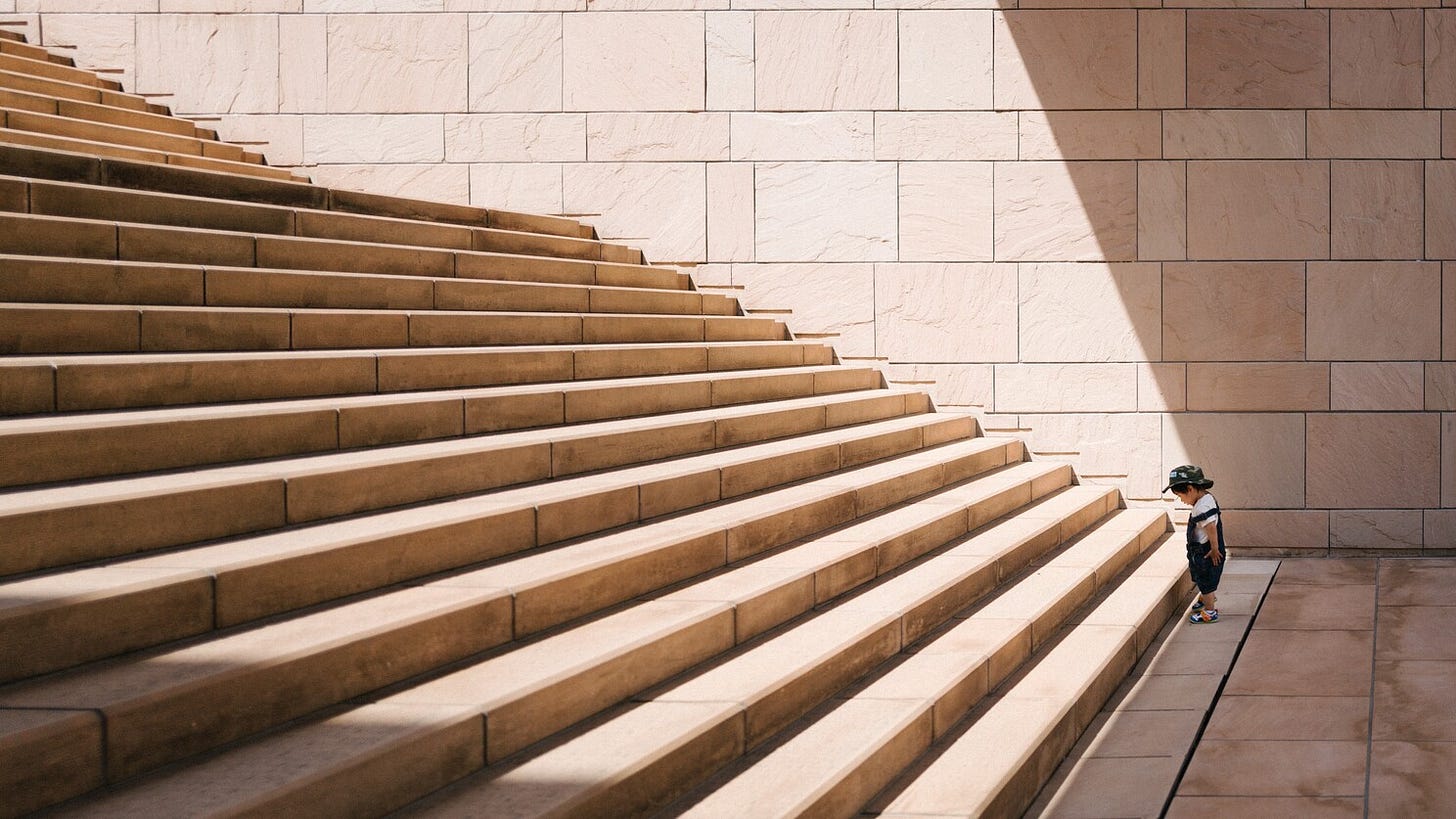Dear reader,
Yes, I am a designer working with innovation, and we might work together now or in the coming future.
Please let me explain to you how I work as a designer (my mindset, my behaviour, and my communication style): what are my 10 principles of design led innovation, so you know what you can expect from me, and you do not get surprise or disappointed along the way so we can have a successful partnership, achieve amazing results and have fun together.
1. Embrace ambiguity: thrive in chaos
Designers start from not knowing the answer to the problem, but we know we must give ourselves permission to explore. We live in a V.U.C.A. (volatility, uncertainty, complexity, and ambiguity) and ever-changing word, where there are not straight forward answers.
It’s not easy not knowing the answer, and even less so not even knowing the right questions to ask. This ambiguity may feel uncomfortable at first, but by embracing it, we will be able to open ourselves up to creative ideas and arrive at unexpected solutions.
2. Be curious and reframe problems: curiosity and reframing
Curiosity invites exploration and makes everything fresh and new. Curiosity opens news doors and perspectives we did not know they existed before. Most of all, curiosity is going to help you “to get good at being lucky”. It is the reason some people see opportunities everywhere.
Reframing is how designers get unstuck. Reframing also makes sure that we are working in the right problem, by stepping back, examining our bias, and opening up to new solution spaces.
3. Focus on human values: empathise
Empathy is the capacity to step into other people’s shoes, to understand their lives, and start to solve problems from their perspectives.
All you have to do empathise, understand them, and bring them along with you in the design process. Ultimately, your product or service should be built to help improve other people’s lives and experiences, so never losing sight of an empathetic view of the world is key.
4. Bias toward action: try stuff and make prototypes
Designers are more focused on action than thinking in order to build their way forward. Instead of talking about an idea, they take that idea real and turn it into reality by building and testing prototypes in order to better understand it and think through the problem.
By doing so, they learn if a product or service is doing what it should do and know so much more about the process and how to improve it in the future.
Creating a prototype allow designers to share their ideas and gain feedback early and often.
5. Iterate, iterate, iterate: iterative approach
In order to reach the right solution, designers receive feedback from customers early and frequently. By constantly improving and refining your work, you will be able to produce better ideas and arrive more quickly at the right solution.
Sometimes designers find the problem is entirely different from what they first thought it was. Designers embrace change and are not attached to a particular outcome, because they are always focused on what will happen next, and not what the final result will be.
6. Show, don’t tell: visual thinking and storytelling
Designers communicate their vision and what they are thinking by using visuals aids. It is more effective than words. This can be done by creating experiences, illustrative visuals, and telling good stories.
7. Learn from failure: growth mindset
This is all about the ability to learn from failure and use failure as a tool to improve our practices. Design begins with not knowing the solution to a challenge. Instead of being scared of failure, we designers use every opportunity to experiment and grow from our mistakes.
A mindset for growth means being comfortable with change. Innovation requires pushing past the boundaries of how something has always been done to look at a problem in a new light.
8. Know it is a messy process: awareness
We know that life gets messy. For every step forward, it can sometimes seem that you are moving two steps back. An important part of the process is letting go, and sometimes amazing designs can emerge from the mess.
Design is a journey, let go of the end goal and focus on the process and see what happens next. Allow the design (thinking) process to guide your actions from start to finish.
9. There is always a way: optimism
In order to take on a design challenge, you need to believe that progress is an option. Optimism is this embracement of possibility and knowledge that there is a better solution to the problem out there.
10. Cross-disciplinary and collaborative: collaboration and co-creation
Designers know that it takes many people from all backgrounds and experiences to truly understand a problem and evolve the solution. Innovation is, by necessity, a collaborative endeavour.
When people from different fields and disciplines come together, breakthrough insights can come up to unlock new and creative solutions to challenge-based problems.













When I start a project I always go through those principles together with the team and the key stakeholders, so we all agree to use them and be the northern start for guidance in the project.
We make a poster, were everybody signs and the we hang it on the wall, so it is always visible to all and we can easily point to and refer to, if in doubt or trouble
Jose, this is a great "Letter-Article" and I would love to share it with my friends, co-workers, and associates but they would not let the missing letter of "N" go in the word "and" on your 4th Principle. Please correct it for all of us, so we can share this with everyone. Thanks